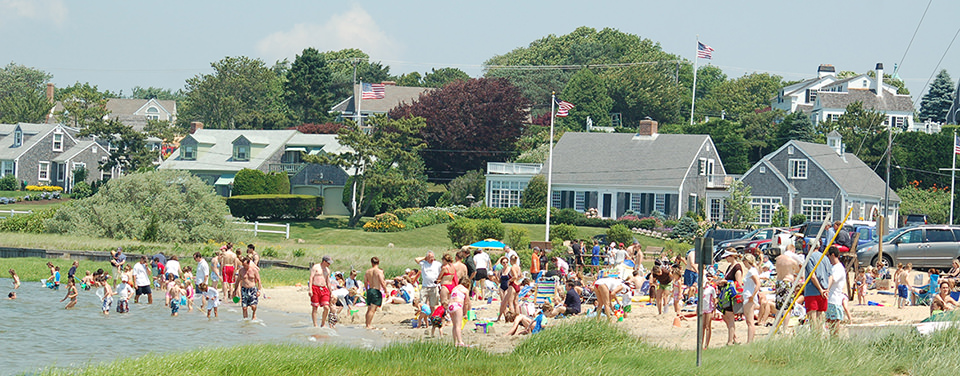Balancing Offshore Energy, Recreation, and Tourism
NOAA serves up data to help understand the pros and cons of wind farm projects.

Day at the Beach
Recreation and tourism opportunities are popular in many coastal areas, including this beach in Cape Cod, Mass.
The Issue
Tourism and recreation are major contributors to the local economy for many U.S. coastal areas. The development of offshore facilities that harness wind power to generate electricity could affect the natural beauty that draws visitors to those areas. At this time, there is little data on the impacts of offshore wind facilities to U.S. tourism and recreation.
The Solution
The Bureau of Ocean Energy Management (BOEM) funded the development of community profiles for 70 East Coast counties that are also promising sites for offshore wind development. In addition to general economic and social information for these counties, the community profiles included comprehensive recreation and tourism data from Economics: National Ocean Watch. Researchers reviewed and accessed this information using NOAA’s Coastal County Snapshot tool for Ocean Jobs.
The Result
BOEM is using this study to help decision makers determine the location of offshore wind energy planning areas along the Atlantic Coast. Data from this study will also be included in National Environmental Policy Act (NEPA) documents and analysis.
Economics: National Ocean Watch (ENOW) provides data on six economic sectors that depend on the oceans and Great Lakes: living resources, marine construction, marine transportation, offshore mineral extraction, ship and boat building, and tourism and recreation. Data are available for 30 states and more than 400 coastal counties in a wide variety of formats. ENOW is the product of a partnership between the NOAA Coastal Services Center, Bureau of Economic Analysis, Bureau of Labor Statistics, and Bureau of the Census.